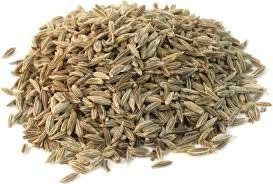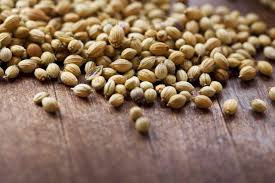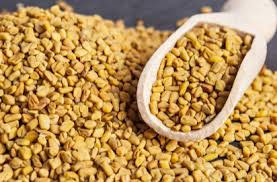Dry Red Chilies
S17 / Teja Stemless
S4/Sannam Stemless
S4/Sannam Stemcut






| Product Name | S17 / Teja Stemless | S4/ Sannam Stemless | S4/ Sannam Stemcut |
|---|---|---|---|
| Style | Dried | Dried | Dried |
| Flavour | High spicy | Medium | Medium |
| Crop | Newest Crop | Newest Crop | Newest Crop |
| Drying Process | Natural & Sun Light | Natural & Sun Light | Natural & Sun Light |
| Color | Red | Red | Red |
| Pungency in SHU | 75000-100000 (Heat) | 25000-30000 (Heat) | 25000-30000 (Heat) |
| Colour in ASTA | 40-60 max | 30-50 max | 30-50 max |
| Length | 5-6 cm | 5-7 cm | 5-7 cm |
| Breath | 0.8-1.3 max | 1.0-1.5 cm | 1.0-1.5 cm |
| Skin | Thin | Thin | Thin |
| Capsaicin content in % | 0.50-0.70 max | 0.2-0.3 max | 0.2-0.3 max |
| Pods with Stalks | 1% maximum | 2% maximum | 2% maximum |
| Broken Chilies | 1% maximum | 2% maximum | 2% maximum |
| Loose Seeds | 1% maximum | 2% maximum | 2% maximum |
| Damaged & Discolored pods | 1% maximum | 1% maximum | 1% maximum |
| Moisture | 14% maximum | 14% maximum | 14% maximum |
| Shelf Life | 18 months | 18 months | 18 months |
| Quality | Deluxe & Best | Deluxe & Best | Deluxe & Best |
| Origin | Khammam, Telangana, India | Guntur, Andhra Pradesh, India | Guntur, Andhra Pradesh, India |
| Packing Details | 25 kg pp | 25 kg pp | 25 kg pp |
| Delivery to Chennai Port in Days | 10 days from the PO and Ready LC | 10 days from the PO and Ready LC | 10 days from the PO and Ready LC |
Cumin Seeds

Cumin – A Spice with Powerful Health Benefits
Cumin is a spice made from the seeds of the Cuminum cyminum plant. It is native to Asia, Africa, and Europe. Many dishes use cumin, especially foods from its native regions of the Mediterranean and Southwest Asia. Cumin lends its distinctive flavor to chili, tamales, and various Indian curries. Its flavor has been described as earthy, nutty, spicy, and warm.
What’s more, cumin has long been used in traditional medicine. Modern studies have confirmed some of the health benefits cumin is traditionally known for, including promoting digestion and reducing food-borne infections. Research has also revealed some new benefits, such as promoting weight loss and improving blood sugar control and cholesterol.
This article will review nine evidence-based health benefits of cumin:
Cumin is a spice that comes from the Cuminum cyminum plant. It is native to Asia, Africa, and Europe. However, people all around the world use it to flavor meals.
9 Powerful Health Benefits of Cumin
- Promotes Digestion
- Is a Rich Source of Iron
- Contains Beneficial Plant Compounds
- May Help With Diabetes
- May Improve Blood Cholesterol
- May Promote Weight Loss and Fat Reduction
- May Prevent Food-Borne Illnesses
- May Help With Drug Dependence
- May Fight Inflammation
Coriander Seeds

About Coriander
Coriander is an herb that’s commonly used to flavor international dishes. It comes from the Coriandrum sativum plant and is related to parsley, carrots, and celery. In the United States, Coriandrum sativum seeds are called coriander, while its leaves are called cilantro. In other parts of the world, they’re called coriander seeds and coriander leaves. The plant is also known as Chinese parsley.
Many people use coriander in dishes like soups and salsas, as well as Indian, Middle Eastern, and Asian meals like curries and masalas. Coriander leaves are often used whole, whereas the seeds are used dried or ground.
To prevent confusion, this article refers to the specific parts of the Coriandrum sativum plant. Coriander, popularly known as dhania in India, is extensively used across various regional cuisines to flavour curries, stir fries, snacks, breakfast items – you name it! It is popular in Mexico and the south western part of the USA too, where it is utilised in salsas and mixed greens to burritos and meat dishes. While the fresh leaves are commonly topped on most dishes, the seeds and a ground powder (masala) are also used in cooking. The leaves are often used raw and added to the dish just before serving as heat tends to lessen its flavour rapidly.
Health Benefits of Coriander
- May help lower blood sugar
- Rich in immune-boosting antioxidants
- May benefit heart health
- May protect brain health
- May promote digestion and gut health
- May fight infections
- May protect your skin
- Easy to add to your diet
Fenugreek Seeds

What is fenugreek?
Fenugreek (Trigonella foenum-graecum) is a plant that stands around 2–3 feet (60–90 cm) tall. It has green leaves, small white flowers, and pods that contain small, golden-brown seeds (1).
For thousands of years, fenugreek has been used in alternative and Chinese medicine to treat skin conditions and many other diseases (1).
Recently, it has become a common household spice and thickening agent. It can also be found in products, such as soap and shampoo.
Fenugreek seeds and powder are also used in many Indian dishes for their nutritional profile and slightly sweet, nutty taste.
Health benefits of fenugreek
- Help control diabetes
- Improve breast milk production
- Alleviate menstrual cramps
- Prevent heart attacks
- Reduce cholesterol
- Aid digestion
- Help in weight loss
- Protect liver



